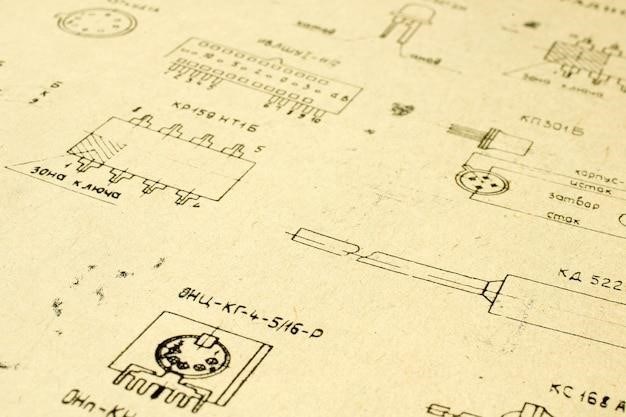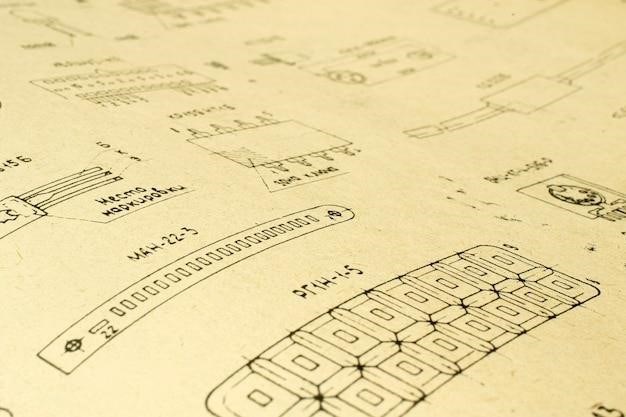Goldstein’s Classical Mechanics⁚ A Comprehensive Overview
Goldstein’s “Classical Mechanics” is a renowned textbook offering an in-depth exploration of particle and system mechanics. Its rigorous approach emphasizes dimensional analysis and is suitable for advanced undergraduates and graduate students. Numerous online resources, including PDFs, are available, though legal access should be verified.
Herbert Goldstein’s “Classical Mechanics,” now in its third edition (often with contributions from Poole and Safko), stands as a cornerstone text in the field. Its comprehensive treatment transcends a mere introductory level, delving into sophisticated mathematical techniques and nuanced physical concepts. The book’s reputation stems from its rigorous approach, demanding a strong background in calculus and physics. While readily available in PDF format online, acquiring it through legitimate channels—such as university libraries or purchasing a physical copy—is crucial to respect copyright and support authors. The text’s enduring influence is evident in its continued use in advanced undergraduate and graduate-level physics curricula worldwide. It’s a challenging yet rewarding journey for those seeking a deep understanding of classical mechanics, offering a detailed exploration of Lagrangian and Hamiltonian formulations, alongside applications in diverse areas of physics. Many solutions manuals and supplementary materials are available online to aid in comprehension, but careful consideration of their legitimacy is essential.
Key Concepts Covered in the Textbook
Goldstein’s “Classical Mechanics” covers a broad spectrum of fundamental concepts. Central to the text is the Lagrangian and Hamiltonian formalisms, providing elegant and powerful methods for analyzing mechanical systems. These frameworks are explored in depth, encompassing concepts like generalized coordinates, constraints, and the principle of least action. The book meticulously details the transition from Newtonian mechanics to these more advanced formulations. Furthermore, it delves into the theory of canonical transformations, essential for understanding the symmetries and conserved quantities within a system. Rigid body dynamics is another significant component, examining rotations, angular momentum, and the Euler equations. The treatment of oscillations, both linear and nonlinear, is comprehensive, covering topics such as coupled oscillators and normal modes. Finally, the text introduces aspects of Hamiltonian mechanics, including Poisson brackets and their applications in advanced dynamical systems analysis, providing a robust foundation for further study in related areas.
Mathematical Tools and Techniques Employed
Goldstein’s “Classical Mechanics” demands a strong mathematical foundation from its readers. The text heavily utilizes vector calculus, including vector algebra, differentiation, and integration, which are fundamental for describing motion and forces in three-dimensional space. A thorough understanding of ordinary differential equations is crucial for solving equations of motion, particularly those arising from the Lagrangian and Hamiltonian formalisms. Tensor calculus, though not always explicitly emphasized, underlies many of the presented concepts, especially in the treatment of rigid body dynamics and rotations. Linear algebra, including matrix manipulations and eigenvalue problems, is essential for analyzing coupled systems and normal modes of vibration. Furthermore, the text often employs techniques from calculus of variations, particularly in deriving the Euler-Lagrange equations and understanding the principle of least action. Finally, while not always central, complex numbers and Fourier analysis can be helpful for solving specific problems and understanding certain phenomena. Proficiency in these mathematical areas is essential for comprehending and applying the concepts detailed in Goldstein’s work.
Applications of Classical Mechanics
Goldstein’s “Classical Mechanics” provides a robust foundation applicable across numerous scientific and engineering disciplines. Celestial mechanics, the study of planetary motion and orbits, heavily relies on the principles detailed within, enabling the prediction of planetary trajectories and satellite movements. The text’s treatment of rigid body motion is crucial for understanding the dynamics of rotating systems, from gyroscopes to spinning tops, and finds applications in aerospace engineering and robotics. Furthermore, the Lagrangian and Hamiltonian formulations presented are instrumental in various fields, including advanced classical mechanics itself, but also in areas like quantum mechanics, where analogous formalisms exist and provide deeper theoretical understanding. The book’s coverage of oscillations and vibrations is essential for analyzing mechanical systems subjected to periodic forces, crucial in structural engineering and the design of mechanical devices. Moreover, the concepts of conservation laws and symmetries, thoroughly discussed, are broadly applicable in physics and other scientific pursuits, providing insights into the fundamental behavior of systems. Finally, the text’s focus on analytical mechanics provides a powerful toolkit for tackling complex systems that may be intractable using Newtonian approaches alone.
Significance of Goldstein’s Approach
Goldstein’s “Classical Mechanics” distinguishes itself through its emphasis on a rigorous and mathematically sophisticated treatment of the subject. Unlike many introductory texts that primarily focus on Newtonian mechanics, Goldstein delves into more advanced formulations, such as Lagrangian and Hamiltonian mechanics. This approach provides a deeper understanding of the underlying principles and symmetries of classical systems, paving the way for more advanced studies in physics. The book’s comprehensive coverage of topics like canonical transformations, Poisson brackets, and action principles equips readers with powerful tools for analyzing complex mechanical systems. Furthermore, Goldstein’s clear explanations and detailed derivations make the often-challenging concepts of advanced classical mechanics more accessible. The inclusion of numerous worked examples and problems further solidifies the reader’s understanding and problem-solving skills. This depth and rigor make it an invaluable resource for students seeking a thorough grasp of classical mechanics and a solid foundation for further exploration of theoretical physics. The text’s enduring popularity and continued use in advanced physics courses attest to the lasting significance of Goldstein’s approach.

Accessing Goldstein’s Classical Mechanics PDF
Locating a PDF of Goldstein’s “Classical Mechanics” requires caution. While various online sources offer downloads, copyright restrictions and legal access must be carefully considered. University library databases often provide legitimate access.
Finding Legal and Free Online Resources
The quest for a free, legal PDF of Goldstein’s “Classical Mechanics” requires diligent searching and careful consideration of copyright laws. While numerous websites offer downloads, many operate outside legal boundaries, potentially exposing users to malware or violating intellectual property rights. A safer approach involves exploring open educational resource repositories like the Internet Archive or institutional repositories of universities that have made the textbook available digitally as part of an open access initiative. Always check the licensing terms before downloading any PDF to ensure compliance with copyright. Remember, respecting intellectual property rights is crucial for supporting authors and publishers while accessing educational materials responsibly. Relying solely on free downloads carries risks; it’s vital to prioritize legal and ethical access methods. Consider exploring alternative routes such as library databases or borrowing physical copies from a library, ensuring you are obtaining the textbook legally and without compromising academic integrity.

Utilizing Library Databases and Institutional Access
Accessing Goldstein’s “Classical Mechanics” through legitimate channels often proves more reliable than searching for potentially illegal PDFs online. Many university libraries subscribe to extensive digital databases containing textbooks, including this classic work on classical mechanics. Students enrolled in relevant physics courses usually have access through their university’s online library portal. These databases provide authorized access to the full text, ensuring legal usage and avoiding the risks associated with unofficial downloads. Researchers and faculty members also benefit from institutional access, often granted through their affiliations with academic institutions or research organizations. These institutional subscriptions provide a convenient and legal means of accessing scholarly resources like Goldstein’s “Classical Mechanics,” eliminating concerns about copyright infringement and the potential for malware from untrusted websites. Checking your university or institution’s library website is the first step towards obtaining legitimate access to the textbook’s digital version.
Potential Copyright and Usage Issues
Downloading and using unauthorized PDFs of Goldstein’s “Classical Mechanics” raises significant copyright concerns. The book is protected by intellectual property laws, and distributing or sharing copyrighted material without permission constitutes infringement. This can lead to legal repercussions for both the distributor and the user, including substantial fines. Furthermore, many illegally distributed PDFs are often incomplete, contain errors introduced during the scanning or conversion process, or might even include malware embedded within the file. Downloading from unreliable sources exposes your computer to potential security risks, such as viruses or spyware. Respecting copyright is crucial in the academic community, and utilizing legitimate channels like library databases or purchasing the book ensures ethical access while also supporting the authors and publishers. Always prioritize legal access to academic resources to avoid potential legal and security risks.
Alternative Resources and Supplementary Materials
While Goldstein’s “Classical Mechanics” is a highly regarded textbook, several alternative resources can supplement your learning. Numerous online lecture notes, often created by university professors, provide valuable explanations and worked examples. These notes can offer different perspectives on the same concepts, enhancing understanding. Many websites offer problem sets and solutions, allowing for practice and self-assessment. Furthermore, exploring other classical mechanics textbooks, such as those by Taylor or Marion and Thornton, can provide complementary insights and different pedagogical approaches. Online forums and communities dedicated to physics can offer peer support and opportunities for collaborative learning. Remember to always verify the credibility and accuracy of online resources before relying on them heavily. A combination of these resources, alongside the main textbook, can create a comprehensive and enriched learning experience.